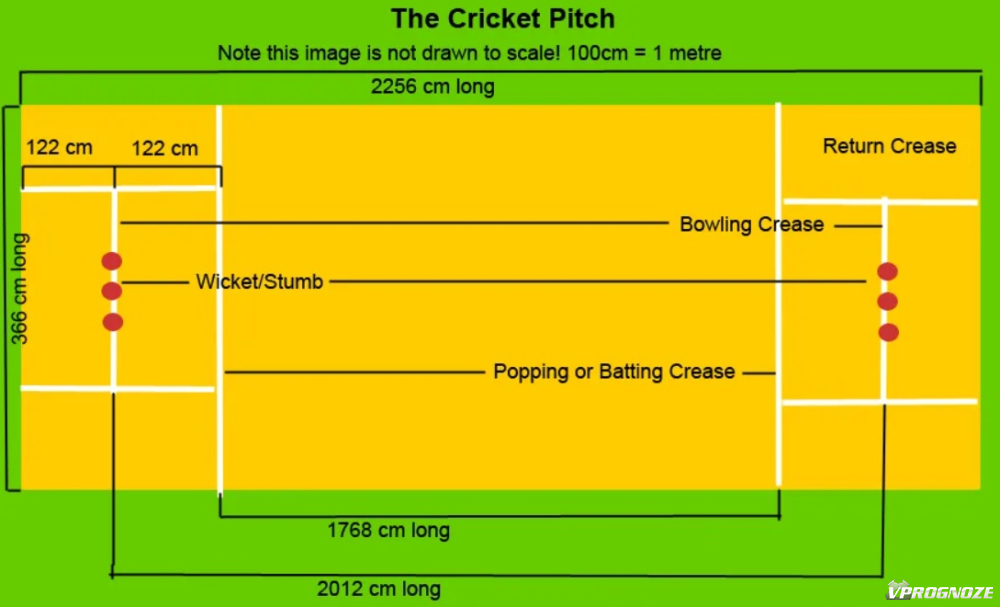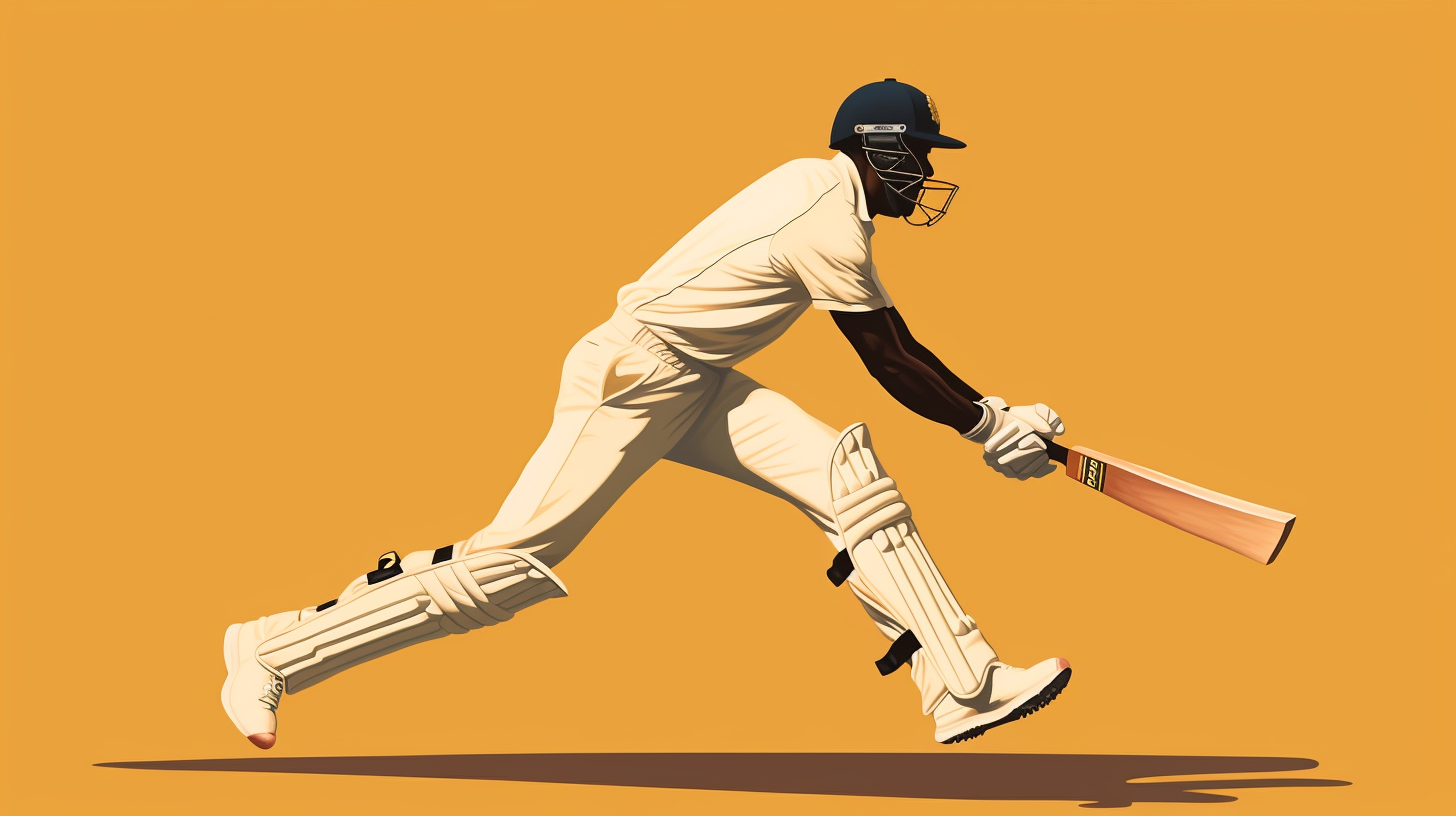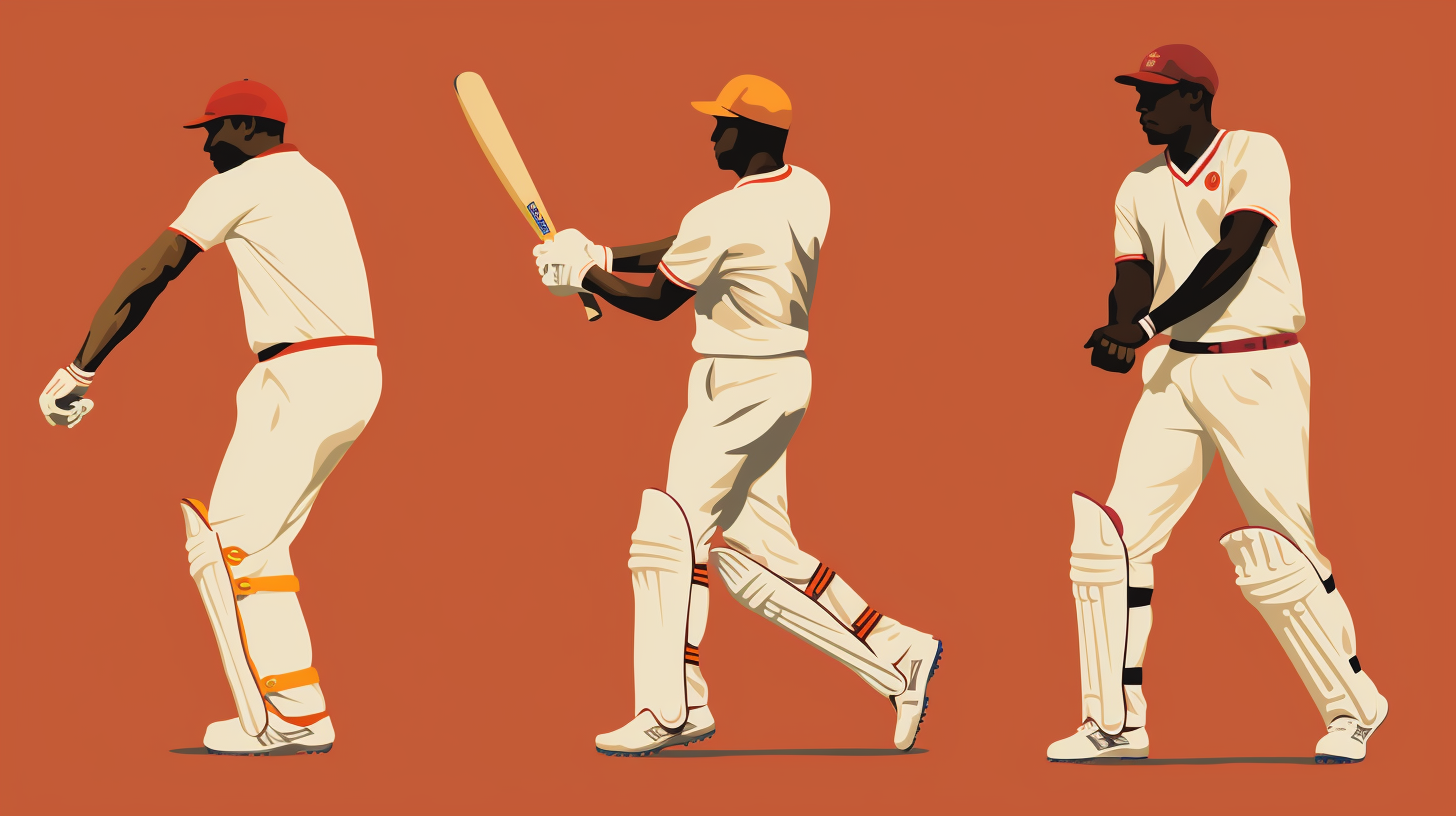- Home
- Wiki
- Learning Center
- Cricket Betting 101: Understanding the Game and Betting Strategies
Cricket Betting 101: Understanding the Game and Betting Strategies
Cricket might be insignificant in Nigeria, but it's rapidly gaining traction globally. Major cricket events are hosted in the UK, Australia, Canada, Asia, and the Gulf nations. Bookies offer pre-match and in-play cricket betting, with around 70% of the wagers being placed live.

Basic Rules of Cricket
Cricket is a team-based, non-contact sport that uses a ball and a bat.
Since the late 18th century, cricket standards have been established and reviewed by the Marylebone Cricket Club (MCC) – a London society founded in 1787.
The code of laws includes descriptions of the game's etiquette and match structure, sections detailing requirements for the field and equipment, team composition and umpires, scoring, and other nuances.
The Field
The match occurs on an oval grass field measuring 130–150 meters long, at the centre of which lies a rectangular dirt strip – the pitch.
The ends of the pitch are symmetrically divided into zones by crease markings.
Parallel to the short pitch boundary, on either side, at distances of 120 cm and 240 cm, are the bowling crease and the popping crease, respectively.
The bowling crease is a line at the centre of which stands a set of three vertical wooden stumps with loosely placed horizontal wooden bails on top.
The popping crease is the line that separates the rectangle with the stumps in the middle from the free central area of the pitch.
Parallel to the extended boundary of the pitch are four return creases, each 240 cm in length, which limit the running lanes for the bowler.

Game Description
The objective of the match is to score more points, or runs, than the opponent. Players use a ball made of cork with a leather covering and wooden bats.
The leading roles of the players are:
- Bowler;
- Batsman;
- Wicketkeeper.
Clubs take turns playing as the bowling and batting side. The fielding team's players come out onto the field in full strength and play against 2 batsmen from the opposing team, who take their positions on the pitch.
The bowler from the fielding side delivers the ball from one end of the pitch to the opposing batsman at the other end. Fielders try to catch the hit ball in any possible way to earn runs. After 6 deliveries, they switch the bowler and start a new over.
The batsman's task is to deflect the delivery using the bat, send the ball as far away as possible, and manage to run to the opposite end of the pitch to score runs for the batting side.
The rules include scenarios where a batsman can be dismissed, for example, the stumps being broken or the ball being caught by a fielder before it hits the ground. The batsman's team earns points if the struck ball reaches the boundary.
The wicketkeeper is the player who guards the stumps, standing behind the batsman and catching balls that aren't hit with his hands. The wicketkeeper is the only player allowed by the rules to wear gloves and pads.

The match is played in 1 or 2 innings or periods. The number of periods is pre-decided by the captains or the tournament regulations, with a break duration of 10 minutes. An innings can be limited by time or by the number of overs. The dismissal of 10 batsmen signifies the end of an innings.
An over consists of 6 deliveries. The final hour of the match comprises at least 20 overs; otherwise, the umpire extends the game.
Cricket rules in numbers:
- Number of opponents: 2;
- Team strength: 11 players;
- Stump dimensions: 22.86 cm in width and 71 cm in height;
- Ball diameter: 22.4–22.9 cm;
- Ball weight: 155.9–163 grams;
- Maximum bat dimensions: 97 cm in length, taking into account the length of the player's hand, and up to 10.8 cm in width;
- Number of umpires: 2 for standard matches, 3 for high-profile tournaments;
- Number of scorekeepers or scorers: 2.
Features
Before the match starts, a toss is conducted between the captains. The winner chooses whether their team will bowl or bat first.
Substitutions are allowed in cricket. A substitute player cannot perform certain roles of a regular player: he can't captain, keep wickets, bowl, or bat. However, the substitute can field or run on behalf of a batsman.
The match duration varies based on the competition level. A short game with one innings can last around 3.5 hours. International matches can go up to 30 hours: 5 days with 6 hours of play daily.
A 'follow-on' rule applies for matches with 2 or more innings. Normally, teams bat in the order: "first-second-first-second". If the second team batting scores significantly fewer runs, the captain of the first team can enforce the 'follow-on', changing the order to "first-second-second-first".
The required lead in runs depends on the match's length. If the match is short, a lead of 75 runs is sufficient. For a 2-day match, the lead needs to be 100 runs, for 3 or 4 days – 150, and for 5 days – 200 runs.
The runs scored and the number of fallen wickets are mentioned in cricket scorekeeping.
The number of wickets taken does not determine the winner but provides informational value.
Types of Cricket Bets
Betting agencies offer wagers on cricket both in pre-match and live modes. Professionals prefer to bet live, but the final decision often depends on the type of tournament and whether they can spare time to watch the broadcast.
Competition formats include:
- The standard Test match format between national teams and in national championships, lasting 3-5 days;
- T20 – a shorter format with 2 innings, each match lasting approximately 3.5 hours;
- ODI – One Day International – single-day matches with 40-50 overs.
Bookmakers offer betting markets on:
- Match outcome;
- Double chance;
- Handicap;
- Totals (Over/Under);
- Player statistics;
- Match statistics;
- First innings result;
- Toss outcome.
- Outcome
In elite cricket, a draw is an allowed outcome, meaning there are three possible betting outcomes for international tournaments. However, draws are uncommon. Bookies for ODI and T20 formats typically offer odds on either team to win.
Double Chance
A "Double Chance" wager lets you back 2 or 3 potential match results. So, if you bet on "Team 1 win or draw", you'd win if either of those scenarios occurs but lose if Team 2 clinches the victory. This type of bet has more outstanding winning potential than a single outcome wager, but the odds are typically shorter as a trade-off.
Handicap
Handicap (or Spread) Betting requires predicting the margin of victory. When teams of differing strengths compete, experienced bettors might opt for a "level handicap". For example, if Team A has a handicap of -2.5 runs, they must win by a margin of 3 or more for the bet to win.
Total
Total refers to the number of runs scored in the entire match or a specified time frame, such as 5, 10, or 20 overs. Bookmakers accept bets on the overall result as well as individual team totals.

Player Statistics
Many bookmakers offer additional markets for betting on athletes' achievements, such as the title of the best player or the best batsman of the tournament, the number of runs a player will score for the team, and the number of times a batsman hits the boundary.
Match Statistics
The lineup for high-profile matches often contains special offers: bets on the method of the first wicket being taken down, the number of times the ball goes out of bounds, and the number of runs across the pitch.
First Innings Betting
In the listings for multi-day cricket competitions, bookmakers create markets for the first innings, which include the main markets: outcome, total, and handicap.
Bookmaking companies highlight the initial segment of the game to attract fans who can't or don't want to watch the tournament and wait for a long time for the result.
Draw Ceremony
The "toss result" market is offered by bookmakers for significant matches. Professionals don't bet on this market.
Betting on the toss is more beneficial for the bookmaker than the client. The probability of guessing which team will play in the field first is 50%. The bet's success depends on randomness rather than the player's analytical abilities. The bookmaker will receive a commission regardless of the event outcome.
How to Place Bets on Cricket
Placing a bet on cricket at a bookmaker:
- Create an account on the official bookmaker's website.
- Undergo identification.
- Deposit funds.
- Open the cricket betting line.
- Choose a sporting event.
- Sequentially transfer one or more markets to the betting slip.
- Set the bet type: "single", "accumulator", or "system".
- Specify the bet amount.
- Confirm the bet slip.
Players can track the outcome of their cricket bet in their account. After the event concludes, the bookmaker will calculate the bet.
How to Properly Analyse a Cricket Match
Weather conditions and climate nuances - The ball travels faster in dry or thin mountain air. In the rain, the game is halted. On cloudy and foggy days, the scoring rate tends to be lower. Test cricket matches are strictly played in natural light.
- "Home ground advantage" - Teams tend to perform better at their home ground, benefiting from the support of their fans and familiar conditions.
- Type and condition of the pitch - On a hard, flat, earthy surface, the ball bounces quicker, giving the batters an edge. On a "slow" grassy pitch, it's easier for the batsman to defend. Imperfections on a worn-out pitch make it difficult to predict the possible angle of the ball's bounce.
- Team and player statistics - The outcome can be influenced by intense rivalries, specific attacking and defending strategies, performance on certain types of pitches, and the presence of key players in the team.
- Motivation - An emotional mindset often determines the outcome of a match. A victory in the first game can often lead to a winning streak, especially at home

Effective Betting Strategies for Cricket
Cricket matches can last up to 5 days. Experts recommend betting on cricket during the game, after the toss, and considering the current situation. For instance, in inclement weather, there might not be a rescheduling of the match but a reduction in the number of overs.
On the Home Team
In any sport, teams achieve their best results at their home stadium. The reason is the support of fans and technical nuances. The hosts can rest before the tournament, while long flights, acclimatisation, and changing time zones might affect the visiting team.
The home team plays on a familiar field, where they've had multiple practice sessions and comfortable conditions for victory are established. The coach selects a lineup of players in advance who are most effective in given conditions and on a specific surface.
If the home team has no apparent issues with the lineup, coach, or physical form, and the opponents are roughly equal in strength, betting on the hosting club has a high chance of success.
On the Attacking Team
The team that bats first has an advantage. The game starts with a new ball with tight seams, which flies further and drastically changes its trajectory during a spin delivery. There are no damages on the pitch at the beginning of the game, so the ball bounces faster – making it more challenging for the batsman to fend off deliveries.
On 'Total Under' at the End of the Game
In prolonged matches, by the late innings, players get tired, damages and irregularities appear on the field and the ball's wear increases.
If scoring 400 runs in the first and second innings is typical, the point total can sometimes drop sharply in the fourth inning.
A bookmaker's client has a chance to make a profitable bet on "Under" – the odds in the betting line are not constantly updated in time by the bookmaker.
Pros and Cons
Advantages
- Competitions throughout the year
- The sport's popularity and high competition among teams
- Betting line inefficiencies exploited by fans, allowing finding valuable odds
- The possibility to place many live bets in a lengthy match
Disadvantages
- Strong dependence on weather conditions
- Presence of fixed matches in Asian regions
- Significant variation in tournament formats and potential in-game changes
- A substantial difference in tournament format and the possibility of in-game changes
Cricket is a sport popular in many countries. Betting companies offer a variety of market options for placing bets.
After studying the sport's rules, competition regulations, and detailed event analysis, it's worth betting on cricket matches.
FAQ
Cricket matches can last up to 5 days, especially in the Test format.
The team that bats first often benefits from a new ball with tight seams, which travels further and can change trajectory sharply on a fresh pitch. The absence of wear and tear on the pitch also aids in faster ball bounce.
Teams often perform better at home due to familiar conditions, home crowd support, and no travel fatigue. Additionally, they're familiar with the technical nuances of their home ground.
Weather can play a significant role. For instance, matches can be shortened in adverse weather with reduced overs. Additionally, weather conditions can influence the game's dynamics, such as ball movement or pitch behaviour.
Common markets include match outcome, total runs, handicaps, and player performance metrics. In significant matches, there can also be bets on aspects like the method of the first wicket or the number of boundaries.
There's a known issue with fixed matches in some Asian regions. It's essential to be aware of this and to place bets through reputable sources.
Yes, cricket tournaments and series are held annually across different countries, allowing for continuous betting opportunities.

Comments0